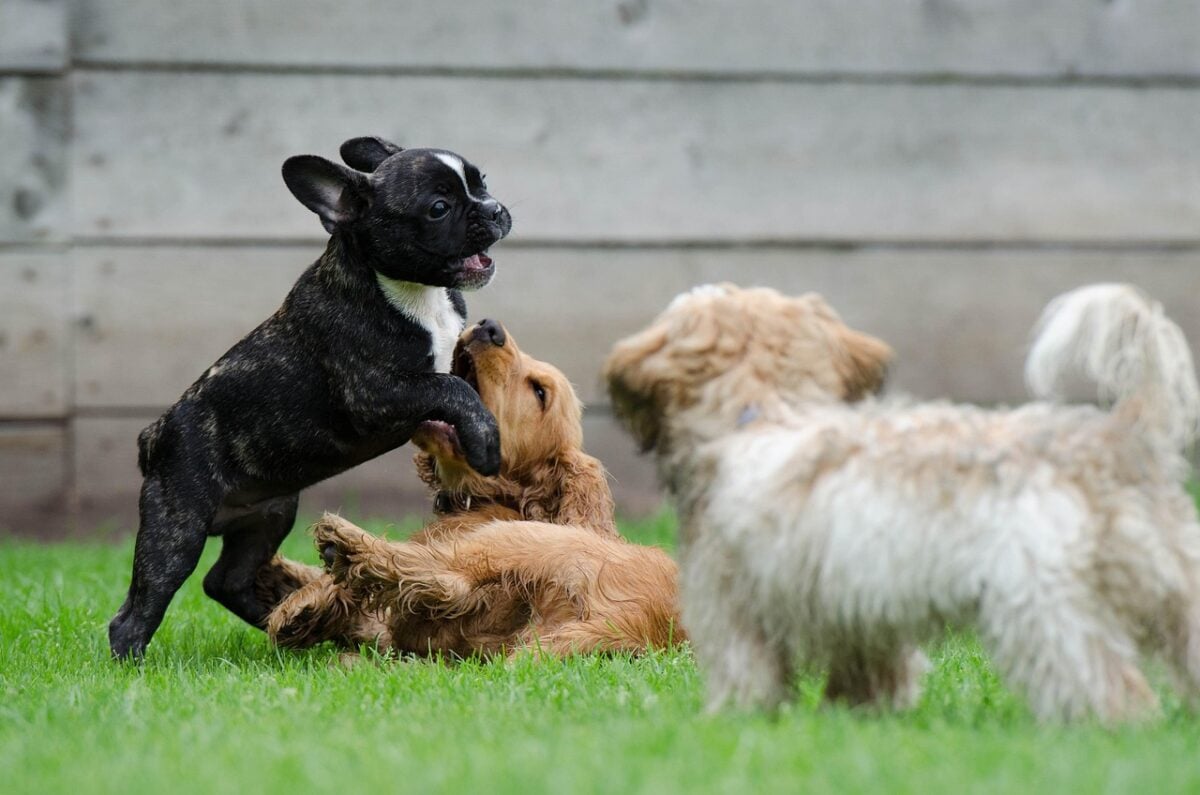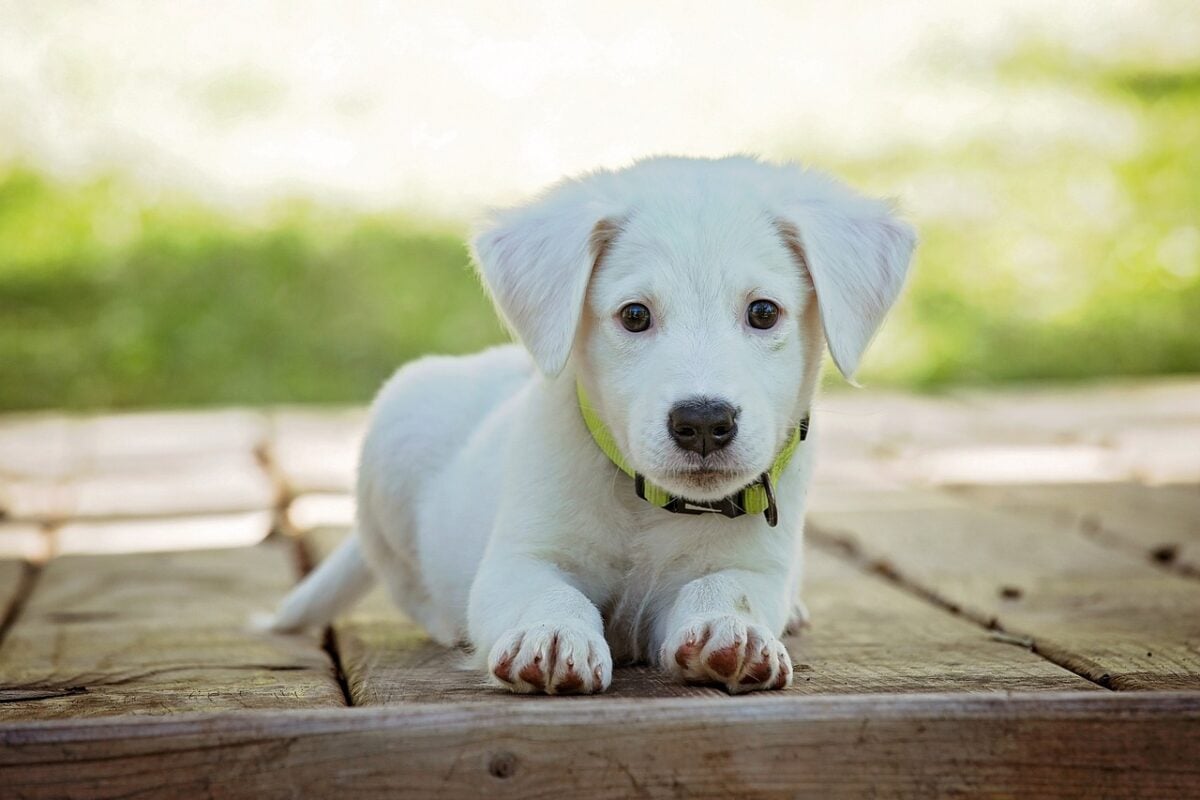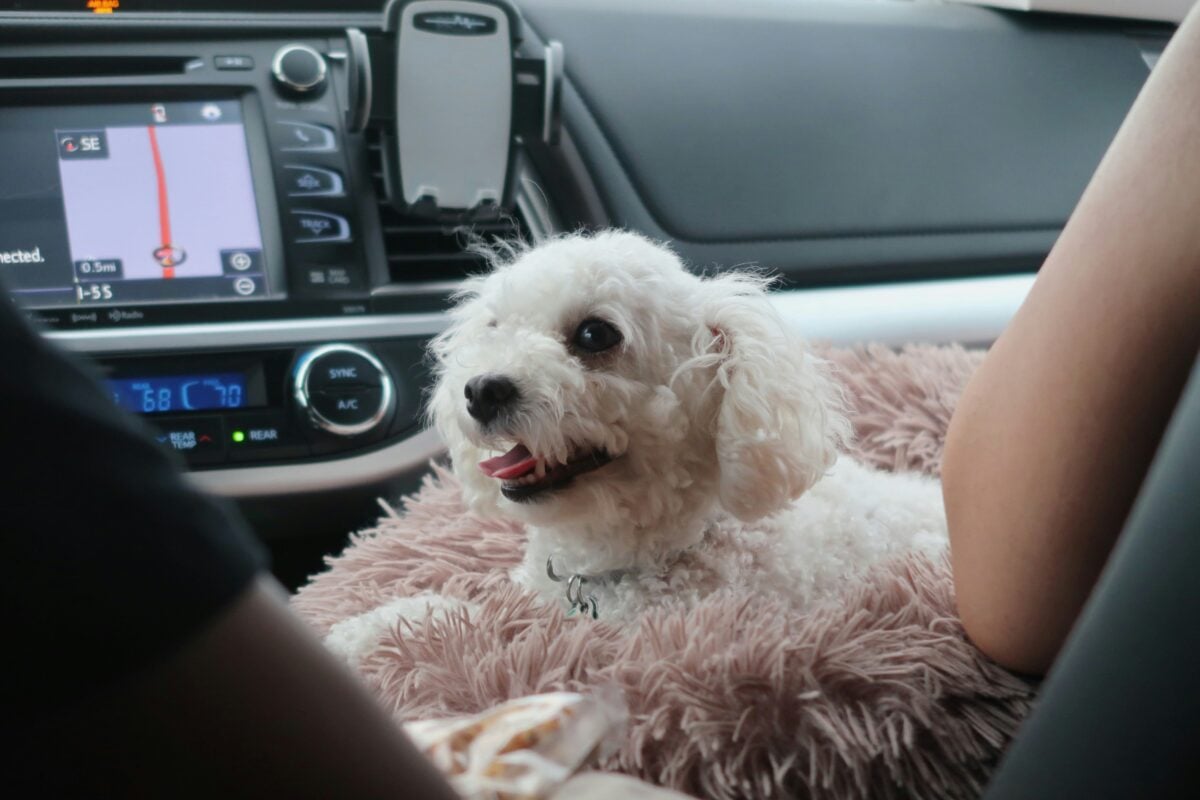Playdate or Parvo? When Can Puppies Be Around Other Dogs?
When you purchase through links on our site, we may earn a commission. Here’s how it works.
You’ve got a wiggly little ball of energy at home, and they’re dying to meet every dog and person they see. But here’s the million-dollar question: When is it actually safe for a puppy to be around other dogs?
Table of Contents
Spoiler alert: It depends on their age, vaccine status, and the dogs they’re meeting. Socialization is crucial, but it must be done the right way. The last thing you want is your sweet little furball catching something nasty from an overly friendly stranger at the dog park.
I’ll break it all down in an easy-to-follow timeline with tips for doggy introductions, safe interactions, and avoiding common mistakes newbies make to help you keep your puppy as safe as possible.
Can My Puppy Meet Other Dogs After First Vaccination?
Yes, but only in low-risk, controlled situations.
After your puppy’s first round of shots (usually 6–8 weeks), their immune system is still booting up. They’re starting to build protection, but not nearly enough to battle big-name nasties like parvovirus and canine distemper.
These viruses spread easily in places like parks, sidewalks, or pet stores, where you have no idea what your puppy might sniff, lick, or step on.
While your puppy can meet other dogs after their first vaccine, those dogs must be fully vaccinated, healthy, and ideally live in a clean, well-maintained environment.
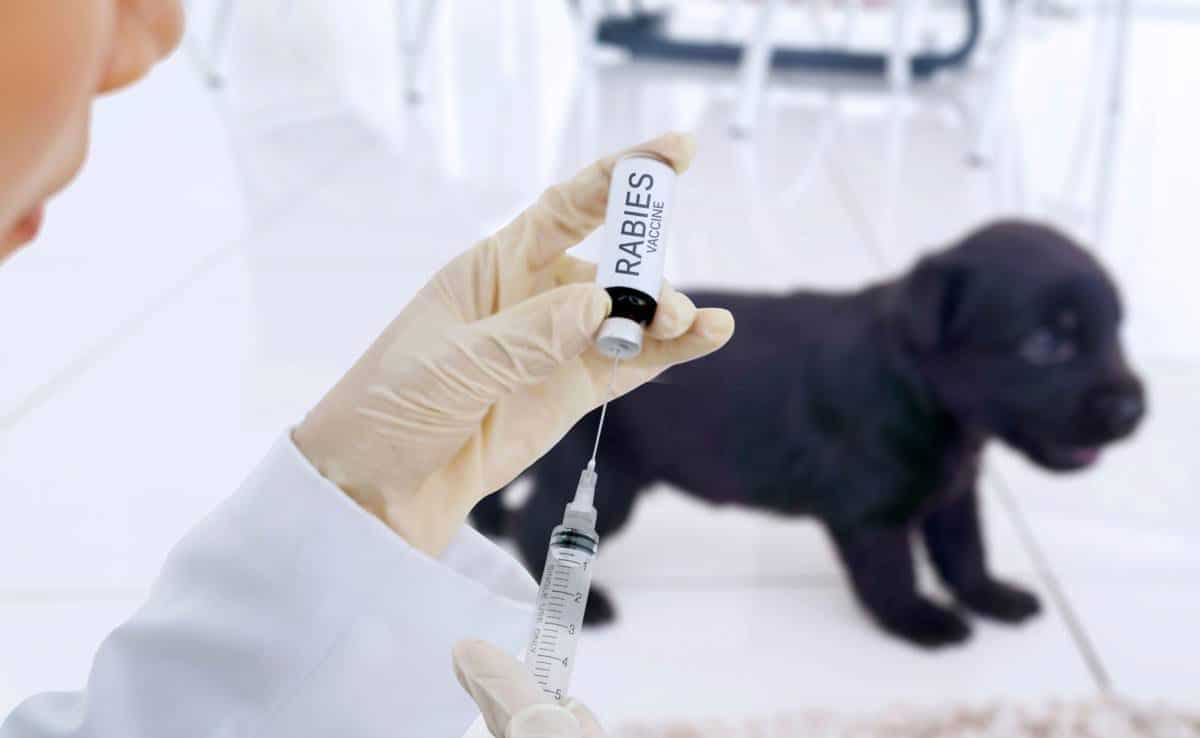
Puppy Core Vaccination Timeline (A.K.A. The “When Can We Finally Go Places?” Chart)
Understanding your pup’s vaccine schedule is key to knowing when they’re ready for more adventurous outings. Immunity builds over time, and your pup reaches full protection two weeks after their final shots.
| Age | Vaccines Given | What It Means |
|---|---|---|
| 6–8 weeks | DHPP (distemper, adenovirus, parvovirus, parainfluenza) | Start of immunity (Can meet safe, known dogs 1 week after vaccine) |
| 10–12 weeks | DHLPP (distemper, adenovirus, parvovirus, parainfluenza, leptospira) | Getting stronger (safety still key) |
| 14–16 weeks | DHLPP and rabies | Nearly there (safety still key) |
| 16–18 weeks | Fully vaccinated | Release your hound to most public places (slowly) |
The American Animal Hospital Association (AAHA) recommends that puppies get core vaccinations for rabies, canine distemper, parvovirus, adenovirus (hepatitis), leptospira, and +/- parainfluenza. These “core” vaccines are necessary to protect your puppy from potentially deadly infectious diseases. Most veterinarians follow AAHA guidelines.
Non-core vaccinations include:
- Bordetella bronchiseptica (kennel cough)
- Borrelia burgdorferi (Lyme disease)
- Parainfluenza (if not included in core vaccines)
- Canine influenza virus (H3N8 & H3N2 strains)
- Crotalus atrox (rattlesnake venom)
Veterinarians typically recommend non-core vaccinations for dogs who are at a higher risk of developing certain infectious diseases. These risks can include where they live, what they’re exposed to, and other factors. Ask your vet which non-core vaccines your puppy may need.
When Should Puppies Meet Other Dogs?
Right away. Seriously.
The golden puppy socialization window is 3 to 14 weeks, when your puppy is learning the rules of the doggy universe.
Most veterinarians and experts, including the American Veterinary Society of Animal Behavior (AVSAB) and the American Society for the Prevention of Cruelty to Animals (ASPCA), agree that early socialization far outweighs the risk of catching an infectious disease.
The first three months of a puppy’s life are the period when sociability outweighs fear, the primary window of opportunity for puppies to adapt to new dogs and other animals, people, and experiences.
Wait too long, and you put your pup at risk for behavioral problems later in life, including fear, anxiety, avoidance, and/or aggression.
Behavioral issues, not infectious diseases, are the number one cause of death for dogs under three years of age. While puppies’ immune systems are still developing during these early months, the combination of maternal immunity, primary vaccination, and appropriate care makes the risk of infection relatively small compared to the chance of death from a behavior problem.
– From the AVSAB Position Statement on Puppy Socialization
But here’s the catch: socialization must be safe, slow, and smart. So, how do you do it right?
Safe Socialization Before Vaccines Are Complete
Here’s how to get your pup meeting other dogs a week after their first round of vaccines without rolling the viral dice.
DO
- Plan playdates with fully vaccinated, well-socialized, and known dogs in a private space
- Join a reputable puppy class with strict vaccine rules
- Use private, clean spaces like your yard or a trusted friend’s
DON’T
- Visit dog parks, sidewalks, pet stores, or grooming salons
- Let your pup sniff other dogs’ poop trails (ew and risky)
- Assume “dog-friendly” means “dog-safe”
Even if public places look clean, they may harbor viruses that linger on surfaces and in soil or water for weeks or months.
How To Introduce Puppies To Other Dogs
Introducing dogs isn’t just about letting them sniff and go wild. There’s an art to it, especially with puppies. Here’s how to make it go smoothly:
- Pick the right dog – calm, gentle, well-socialized, and puppy-tolerant
- Start on neutral ground – a fenced yard or quiet room works well
- Watch for polite greetings – sniffing, wagging tails, play bows
- Reward – Use high-value treats and praise to reward calm and positive interactions
- Interrupt if needed – don’t let rough play or growling escalate
- Keep it short – stick to 10-15 minutes the first few times
- End on a high note – quit while they’re still having fun!
If either dog seems overwhelmed, scared, or too hyper, take a break and try again another day.
After Vaccinations Are Complete: Let The Games Begin!
Once your puppy is fully vaccinated (around 16–18 weeks), it’s time to let them explore the world and mingle with many new doggy friends. This is when the real socialization party starts, but keep sessions short, positive, and supervised. Your puppy is still learning.
At this stage, they can safely:
- Meet new dogs on leash in your neighborhood
- Go on walks in public places
- Attend dog-friendly events, cafés, or outdoor patios
- Join group training classes
- Visit dog parks (with caution; read on…)
Are Dog Parks Safe For Puppies?
Dog parks can be a lot of fun, but also a sensory overload for puppies.
Here’s why you should wait:
- Many dogs play rough or have poor manners
- Some owners are on their phones instead of watching their pets
- Vaccination history of other dogs is unknown
- Loud noises, fast movement, and strange smells can overwhelm a young pup
Ideally, wait until your puppy is:
- At least 5–6 months old and fully vaccinated
- Comfortable around different types of dogs
- Has solid training (come, sit, leave it)
When you do go, start during off-peak hours, stick to the small dog area (if possible), and watch like a hawk.
Need Some Puppy Training Help?
If you’re new to puppy training and don’t want to attend an in-person puppy class — or spend a fortune on a professional dog trainer — consider going online. The best online dog training courses are affordable, easy to do on your own time, and taught by certified dog trainers.
Socialization Is More Than Just Dog Friends
Sure, puppy playdates are adorable, but socialization goes way beyond wagging tails and chase games. To raise a confident, well-adjusted dog, your pup needs gradual exposure to all kinds of real-world stuff.
I’m talking new faces, strange sounds, different surfaces, and unfamiliar places. The more your puppy experiences early on, the less likely they are to grow up fearful or anxious. It’s not just about meeting dogs — it’s about meeting the world. Here are some ideas to get you started:
- People: men, women, kids, people of different ethnicities, cyclists, joggers, repair or delivery people, people in hats or uniforms
- Noises: traffic, thunder, vacuum cleaners, loud music, lawn mowers
- Environments: car rides, vet visits, stairs, elevators, going outside in the dark
- Objects: grooming tools, umbrellas, strollers
Tips To Keep Your Puppy Protected
Before your pup is fully vaccinated, the world can be a risky place. But that doesn’t mean they have to live in total lockdown. With a few smart precautions, you can safely start exposing your puppy to the sights and sounds of the world.
Here are some simple ways to keep your puppy protected while they learn, explore, and grow.
- Carry your puppy in and out of veterinary clinics.
- Consult your veterinarian to determine which vaccines your puppy needs.
- Avoid letting your puppy sniff animal feces or be in bodies of water outside.
- Bring your puppy out in a carrier or pet stroller (or just hold them) to allow them to see the world and other dogs (but don’t get too close).
- Ask your vet for safe puppy class recommendations.
Frequently Asked Questions
New puppy owners have a ton of questions about the safety of socialization, so I’ve included more Q&As here. If you have more questions, please ask us in our comments.
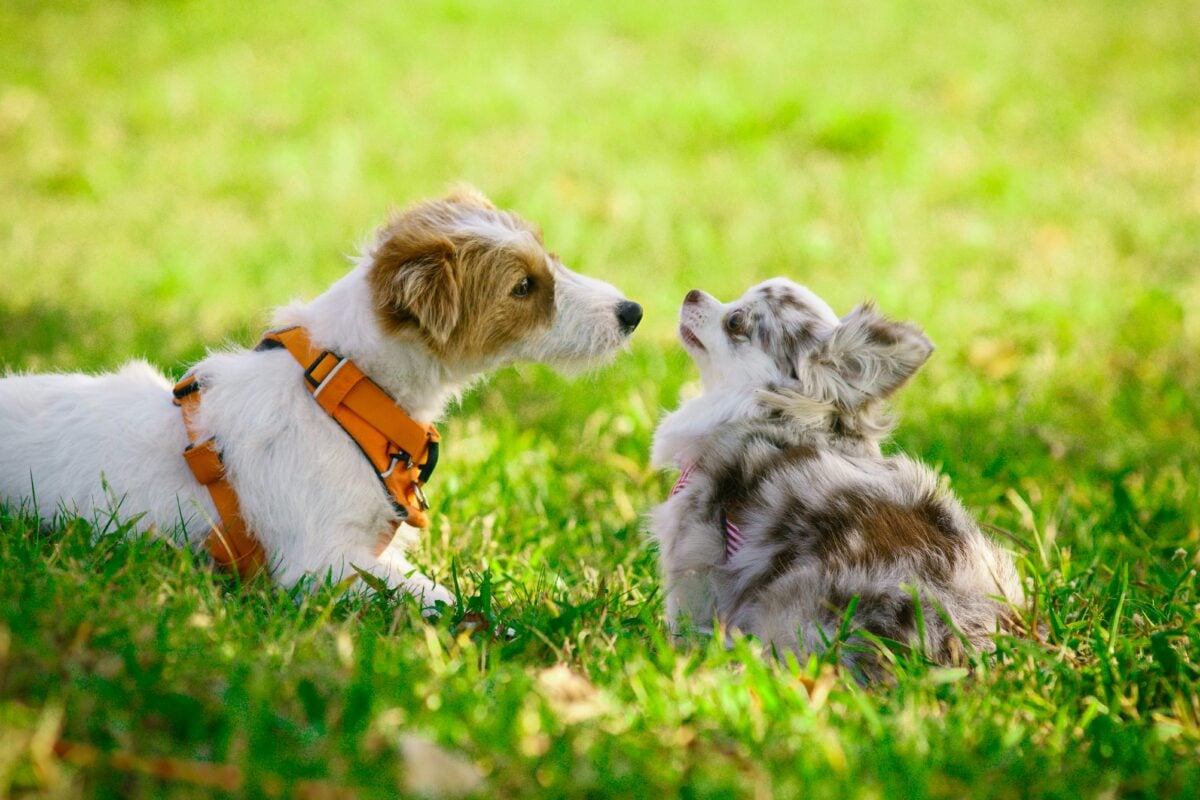
Can Puppies Be Around Other Dogs At 8 Weeks Old?
Yes, if the other dog is fully vaccinated, friendly, and low-risk. At 8 weeks, puppies are typically just beginning their vaccine schedule, so they shouldn’t be around unknown or unvaccinated dogs. Private puppy meetups or structured socialization classes with vaccine checks are your best bet.
When Should Puppies Meet Other Dogs?
The ideal time to start socialization is between 3 and 14 weeks old. This is a sensitive period when puppies are most open to new experiences. Early, positive interactions with other dogs can help prevent fear, aggression, and anxiety later on. Just make sure interactions are safe and supervised.
When Can Puppies Socialize With Other Dogs In Public?
Puppies should wait until they are fully vaccinated—usually around 16–18 weeks old—before visiting places like dog parks, busy sidewalks, or pet stores. Until then, stick with private settings and avoid places where unknown dogs may have left germs behind.
When Can I Take My Puppy To The Dog Park?
Dog parks can be chaotic and overwhelming for young puppies, so it’s best to hold off until they’re ready to handle the environment confidently.
Wait until your puppy is:
- Fully vaccinated (16–18 weeks old)
- At least 5–6 months old
- Comfortable with other dogs
- Able to follow basic commands like “come” and “leave it”
Can My Puppy Be Around Older Dogs?
Yes — as long as the older dog is:
- Fully vaccinated
- Calm and patient with puppies
- Not sick or recovering from illness
Older dogs can help teach young puppies good manners and dog body language. Just be sure the interaction is supervised and respectful on both sides.
What Happens If My Puppy Meets An Unvaccinated Dog?
If your puppy is still building immunity and meets an unvaccinated dog, there’s a risk of exposure to serious illnesses, even if the unvaccinated dog looks healthy. Avoid any interaction with unvaccinated or unknown-status dogs until your puppy has completed their vaccination series.
What If You Already Have A Dog And Get A Puppy?
As long as your existing dog is healthy and vaccinated, that’s a fantastic way to start puppy socialization with other dogs. See our guides on bringing your puppy home and how to introduce dogs to each other for some top tips to help them get along.
Puppyhood Is The Best Time To Consider Pet Insurance
The earlier you sign up for pet insurance, the better. Why? Because once a health condition becomes a pre-existing condition, it’s no longer covered. From swallowed socks to surprising chronic health problems, pet insurance can help protect your wallet while giving your pup the ideal vet care.

